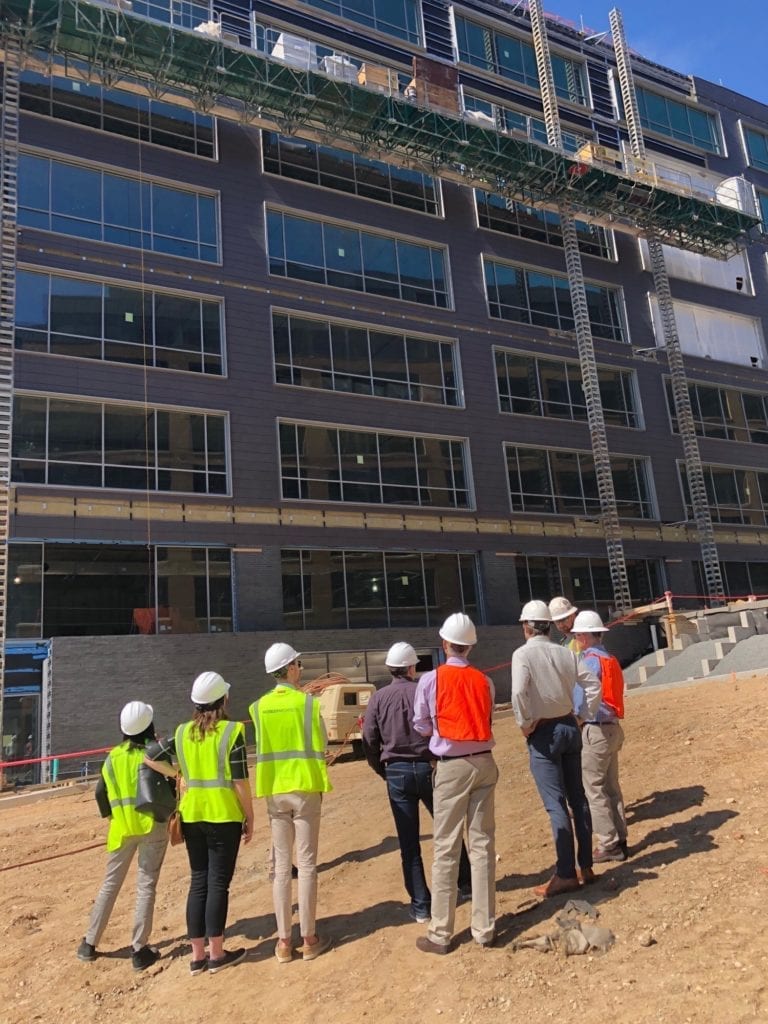Project Profile: Wills Wharf
Scope of work: $17 million, 330,000 square feet, mixed-use building at Harbor Point
BC&E Member companies involved: Henry J. Knott Masonry, Swirnow Building Systems, Miller Long & Arnold Company, Froehling & Robertson
The site of a gleaming modern building with expanses of windows and a slick, rainscreen cladding is not the first place you would expect to find a masonry crew. Yet masonry skills, rigor and a little innovation proved key to completing Wills Wharf.
Eager to add rainscreen installation to its capabilities, Henry J. Knott Masonry landed the contract to complete the exterior of the new building at the high-profile Harbor Point development.
“This was the first job where we ever saw or touched a rainscreen,” said Karl Kress, Superintendent. To successfully execute the contract, the Henry J. Knott crew would have to learn an entirely new cladding system, find elegant ways to work with certain design complexities (such as the horizontal metal band that interrupted the cladding every other floor) and address challenges that arose in the field to ensure the elevations of all exterior elements were correct.
“Henry J. Knott are master tradespeople. They brought the skills of expert masons to the NeaCera Terra-cotta rainscreen application, dealt with a large and challenging project and delivered a phenomenal result,” said John Stahl, Vice President at Swirnow Building Systems.
Mastering the new product involved some training with the manufacturer, selecting a small expert crew to complete the job and developing confidence with the product as well as specific installation plans by creating mock-up panels.
Committed to the concept that “you have to spend money to make money,” Henry J. Knott also dedicated time to determining the best tools to complete the job, Kress said.
“If we come up with a tool that is going to make things go faster, then that tool pays for itself,” he said. “So we looked at what kinds of saws would work better for cutting the terra cotta or what kind of saw blades. We went through a wide range of table saws, tile saws, different kinds of segmented blades versus continuous rim blades. There was a big learning curve to find the best tools that would enable us to do the work in a timely manner.”
Ultimately, one unconventional tool – a hydraulic scaffold – proved key to efficiently and seamlessly completing the installation.
“Typically, rainscreen installers use boom lifts,” Kress said. “Hydraulic scaffolds cost more. But we could put more guys and material on the scaffold which eliminated downtime.”

